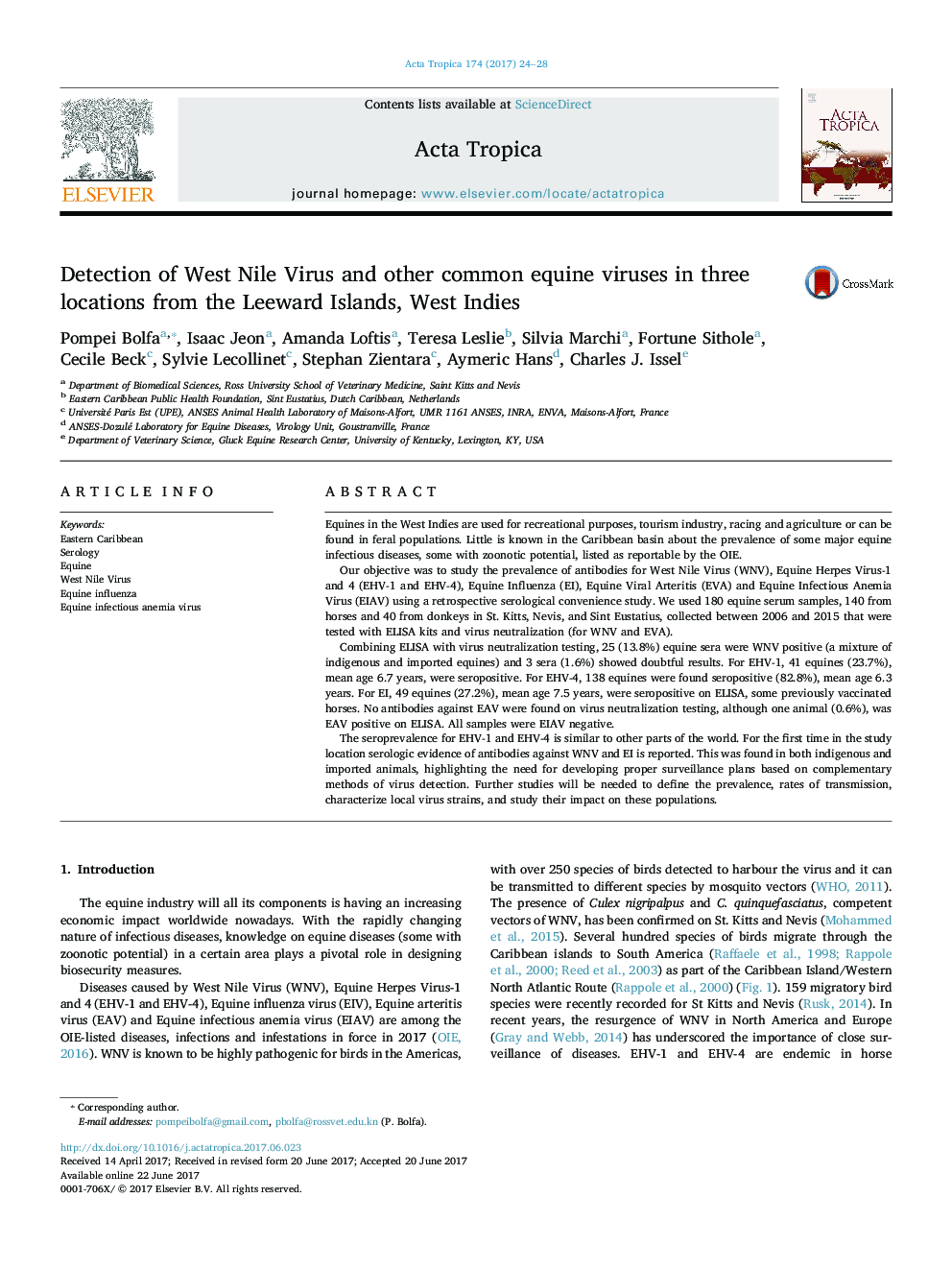| Article ID | Journal | Published Year | Pages | File Type |
|---|---|---|---|---|
| 5670758 | Acta Tropica | 2017 | 5 Pages |
â¢WNV and EI antibodies were detected both in indigenous and imported equines from 3 islands in the West Indies.â¢The combination of competent migratory birds, resident birds and mosquito vectors could constitute a scenario for an outbreak of WNF.â¢No antibodies against EIAV and EAV were found.
Equines in the West Indies are used for recreational purposes, tourism industry, racing and agriculture or can be found in feral populations. Little is known in the Caribbean basin about the prevalence of some major equine infectious diseases, some with zoonotic potential, listed as reportable by the OIE.Our objective was to study the prevalence of antibodies for West Nile Virus (WNV), Equine Herpes Virus-1 and 4 (EHV-1 and EHV-4), Equine Influenza (EI), Equine Viral Arteritis (EVA) and Equine Infectious Anemia Virus (EIAV) using a retrospective serological convenience study. We used 180 equine serum samples, 140 from horses and 40 from donkeys in St. Kitts, Nevis, and Sint Eustatius, collected between 2006 and 2015 that were tested with ELISA kits and virus neutralization (for WNV and EVA).Combining ELISA with virus neutralization testing, 25 (13.8%) equine sera were WNV positive (a mixture of indigenous and imported equines) and 3 sera (1.6%) showed doubtful results. For EHV-1, 41 equines (23.7%), mean age 6.7 years, were seropositive. For EHV-4, 138 equines were found seropositive (82.8%), mean age 6.3 years. For EI, 49 equines (27.2%), mean age 7.5 years, were seropositive on ELISA, some previously vaccinated horses. No antibodies against EAV were found on virus neutralization testing, although one animal (0.6%), was EAV positive on ELISA. All samples were EIAV negative.The seroprevalence for EHV-1 and EHV-4 is similar to other parts of the world. For the first time in the study location serologic evidence of antibodies against WNV and EI is reported. This was found in both indigenous and imported animals, highlighting the need for developing proper surveillance plans based on complementary methods of virus detection. Further studies will be needed to define the prevalence, rates of transmission, characterize local virus strains, and study their impact on these populations.
Graphical abstractDownload high-res image (211KB)Download full-size image
